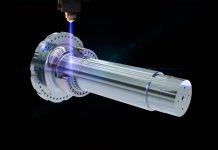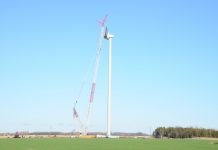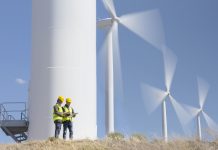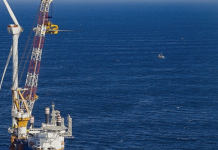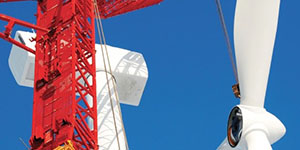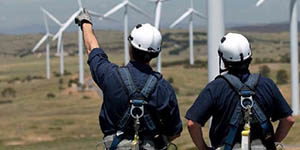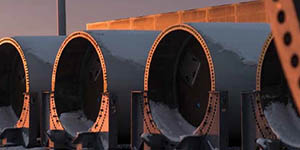Why are power purchase agreements important?
Power purchase agreements are a major market driver of renewable energy growth. There are mutual benefits for owners and offtakers. Offtakers, typically corporations or utilities with large energy loads, make a long-term commitment that exclusively supports a portion of a specific clean-power plant. They can credibly claim the renewable attributes of the contracted output, usually to match a certain amount of their electricity load with clean energy. Generators, on the other hand, receive long-term revenue certainty for a plant, which helps them secure project financing. Market demand for PPAs helps incentivize developers to add new clean megawatts to the grid.
How many PPAs has Enel North America executed over the years?
What is involved in planning a PPA? Enel North America has executed over 115 PPAs with over 66 unique customers, including corporate and industrial (C&I) partners and utilities.
The PPA process begins when a renewable energy project is in development. Developers often plan for an expected amount of PPA revenue to ensure a plant’s financial viability. Contracted revenue is an important part of the financial model that developers present to project investors.
Enel’s origination team approaches the market with our available capacity, engaging directly with prospective buyers. Large energy users across sectors are active in the PPA market — while large technology companies are by far the largest clean-energy purchasers, Enel has also signed PPAs with major brands in food and beverage, apparel, retail, finance, science, and other sectors.

And even companies with smaller energy needs can participate through aggregation deals, like the one that Enel announced in 2021 with four partners joining forces at the Azure Sky wind project. Negotiations involve financial, legal, sustainability, and operations professionals. It can take several months to several years to come to final terms on a PPA, depending on the complexity of the offtake structure and the preferences of the seller and buyer. Finally, a PPA is executed, and Enel’s energy and commodity management team serves as the point of contact with an offtaker throughout the term of the agreement.
Beyond execution, Enel maintains a relationship with PPA buyers, ensuring seamless integration of renewable energy into their operations. Our team offers expertise in managing risk, optimizing market participation, and providing tailored contract structures to enable businesses to meet their sustainability and financial goals. With over a decade of market development, PPAs are a tried-and-true instrument to help organizations navigate the evolving energy landscape while securing long-term price stability and emissions reductions. As energy demand continues to rise due to the expansion of data centers, AI, and electrification, clean-energy offtake solutions like PPAs empower businesses to transition to clean energy.
What is unique about Enel and Meta’s recent PPA?
Meta is one of Enel’s largest customers, and the Rockhaven PPA represents the companies’ third such agreement. Meta is one of the leading corporate buyers of clean energy worldwide, and Enel is excited to continue partnering with the technology leader. What are the details of the Meta PPA? This PPA involves a 115-MW portion of the 140-MW Rockhaven wind farm in Murray and Carter counties, Oklahoma.
How long have Enel and Meta collaborated on PPAs? What factors have made this such a successful partnership?
Enel and Meta announced their first PPA in 2017 — a 200-MW agreement at the Rattlesnake Creek wind farm in Nebraska supporting the Sarpy Data Center. That agreement was later expanded to include the plant’s full 320-MW output by 2029. In 2023, Enel announced a 125-MW PPA with Meta at the Alta Farms wind farm in Illinois, supporting the tech leader’s DeKalb Data Center.
Why is it important for data centers to have access to green energy?
In general, electricity demand is forecasted to rise across the United States due to industrial electrification, electric vehicles, data centers, and other economic development. To meet this rising demand while simultaneously spurring the economy, financial contractual tolls such as PPAs are important to enable new energy capacity on the grid. These agreements like the one with Meta can help an offtaker match a desired quantity of electricity with new clean energy.
More info www.enelnorthamerica.com




